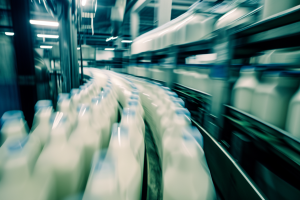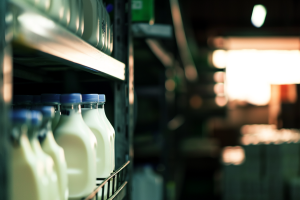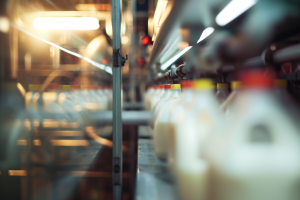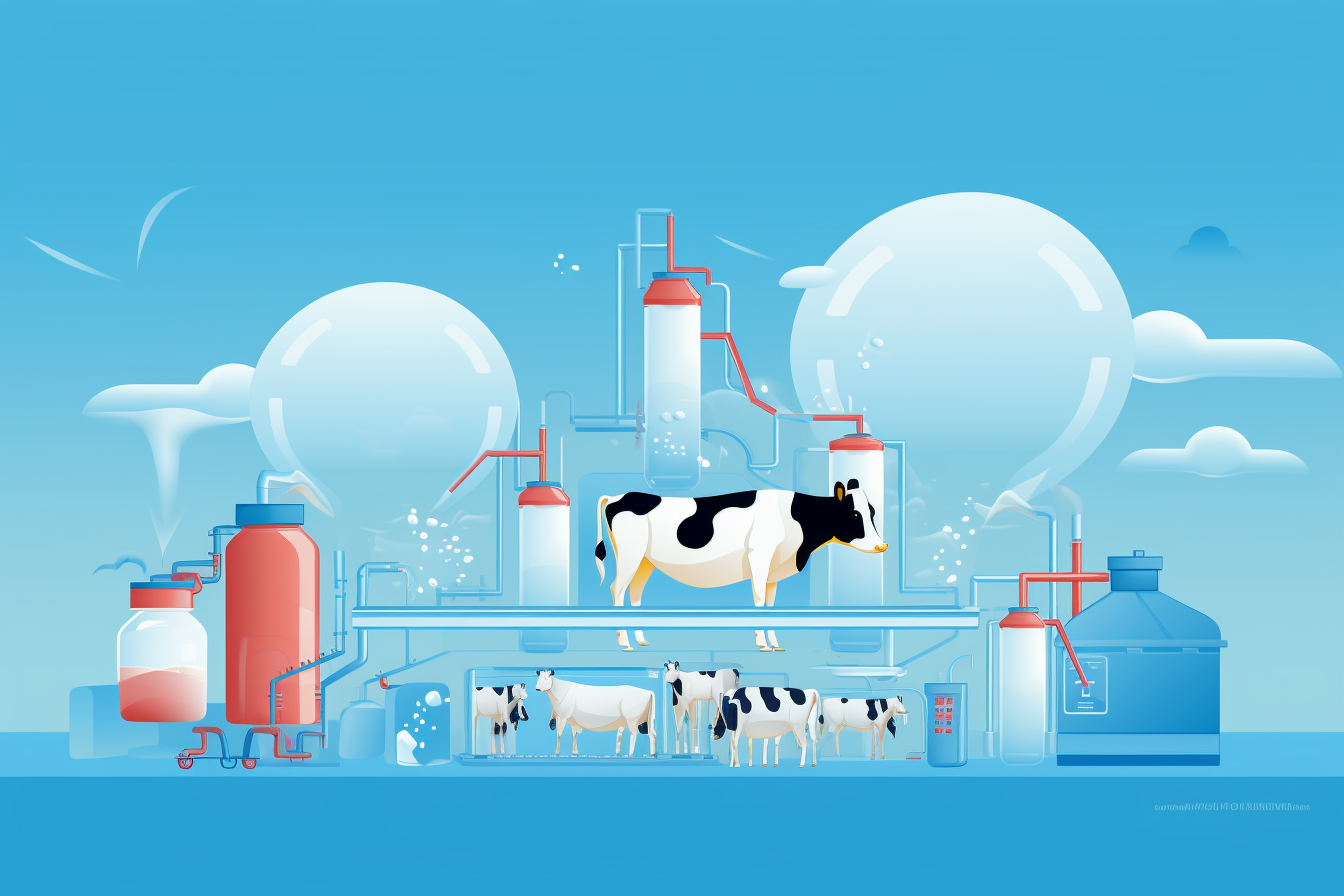
Precision and Efficiency: The New Dance of Dairy Logistics
In the ever-evolving landscape of dairy supply chain logistics, maintaining product integrity from farm to store has become a sophisticated dance of precision and efficiency. As we navigate through 2024, the dairy industry faces unique challenges in ensuring the safe and timely transportation of dairy products, a task governed by stringent regulations and advanced cold chain management techniques. Learn more about Cold Chain Management.
Understanding the Intricacies of Dairy Supply Chain Logistics
The Critical Role of Cold Chain Management in Dairy Logistics
Navigating Dairy Transportation Safety and Compliance
Dairy products, known for their sensitivity to temperature fluctuations, demand rigorous safety protocols during transportation.
“The implementation of the Food Safety and Modernization Act (FSMA) has further tightened these requirements, emphasizing the importance of maintaining a sterile environment throughout the journey from the farm to the consumer.”
Discover more about food safety.
The Impact of FSMA on Dairy Transport

Technology in Logistics: Beyond Monitoring, Shaping the Future
Enjoying our insights?
Subscribe to our newsletter to keep up with the latest industry trends and developments.
Stay InformedSince the introduction of the FSMA Sanitary Transportation Rule in 2016, dairy transport logistics have been under a microscope, ensuring that every step in the cold chain adheres to the highest standards of food safety. This rule, building upon the 2005 Sanitary Food Transportation Act, aims to eliminate risks such as improper refrigeration and contamination during transit.
Refrigeration: The Linchpin of Dairy Product Integrity
Maintaining the right temperature is crucial for dairy products. According to Clemson University’s research, Grade A milk must be kept at or below 45 degrees Fahrenheit to minimize bacterial growth and preserve quality. This stringent temperature control extends beyond transportation to include warehousing, distribution, and storage.
The Complexities of Timetables and Mixed Dairy Shipments
Different dairy products have varying shelf lives, which adds another layer of complexity to dairy logistics. For instance, milk requires faster transportation compared to
ice cream. Managing these varying timelines while ensuring product quality is a testament to the intricate nature of dairy supply chain logistics.
Leveraging Technology for Efficient Cold Chain Management
Modern logistics heavily rely on technology for temperature monitoring and logging, crucial for managing the risks in the cold chain. This technological integration ensures that dairy products are constantly monitored and maintained at optimal temperatures throughout their journey. Explore advancements in Logistics Technology.
The Ripple Effects of COVID-19 on Dairy Logistics
Challenges and Adaptations in the Dairy Industry During the Pandemic

Consumer Preferences: Steering the Dairy Market’s Evolution
The onset of the COVID-19 pandemic in early 2020 brought unprecedented challenges to the dairy supply chain. The closure of food-service establishments led to significant disruptions, highlighting the need for flexible and resilient logistics strategies. The Dairy Farmers of America reported a staggering 3.7 million gallons of milk dumped daily in April 2020, underscoring the urgency for adaptive measures. Read more about COVID-19’s impact on the industry.
Learning
from the Pandemic: Preparing for Future Crises in Dairy Logistics
The pandemic underscored the importance of adaptability in dairy logistics. The federal government’s response, including the examination of agricultural supply chains and the issuance of waivers for truck drivers, played a crucial role in maintaining the flow of dairy products during these challenging times. This period also saw an accelerated adoption of digital technologies for remote monitoring and management of supply chains. Delve into Digital Transformation in logistics.
Addressing the Trucking Industry’s Role in Dairy Logistics
The Driver Shortage Crisis and Its Impact on Dairy Transportation
The trucking industry, vital for dairy logistics, has been grappling with a driver shortage, exacerbated by the pandemic. This shortage not only affects the availability of transportation but also drives up freight rates, impacting the overall efficiency of dairy logistics. The American Trucking Associations (ATA) estimates a shortage of over 100,000 drivers, significantly straining the supply chain. Learn about the role of Autonomous Trucks.
Innovations and Strategies to Combat Driver Shortage

Cold Chain Management: Ensuring Dairy’s Integrity from Farm to Store
In response to this crisis, trucking companies are investing in driver recruitment and retention, offering increased pay and bonuses. These efforts are crucial in ensuring a steady flow of qualified drivers to meet the demands of dairy transportation. Additionally, there’s a growing trend towards automation and the use of autonomous vehicles in the industry, which could potentially alleviate some of the pressures caused by the driver shortage.
The Economic Implications of Dairy Supply Chain Logistics
Analyzing Market Trends and Consumer Preferences
Consumer trends towards longer shelf-life products have fueled the growth of cold chain logistics in the dairy industry. This shift reflects a broader market trend towards minimizing food waste and ensuring product quality. The global cold chain market, valued at $233.8 billion in 2020, is projected to reach $340.3 billion by 2025, recording a compound annual growth rate (CAGR) of 7.8 percent, according to Research and Markets. Explore Market Dynamics in the transportation industry.
The Future of Dairy Logistics: Predictions and Trends
Looking ahead, the dairy logistics sector is expected to continue evolving, with an emphasis on technological advancements, sustainability, and efficiency. The integration of advanced tracking systems, AI, and sustainable practices are likely to shape the future of dairy transportation. Innovations like blockchain for traceability and IoT for real-time monitoring are becoming increasingly prevalent, offering new levels of transparency and efficiency. Discover the impact of IoT in Dairy Logistics.
Conclusion:
The complexities of dairy supply chain logistics in 2024 encompass a range of factors, from stringent safety standards and technological advancements to market dynamics and the impact of global events like the COVID-19 pandemic. As the industry continues to adapt and evolve, the focus remains on ensuring the safe, efficient, and sustainable transportation of dairy products, meeting the demands of a growing and ever-changing market. The future of dairy logistics is poised for transformative changes, driven by innovation and a commitment to excellence in every step of the supply chain. Learn more about Sustainability in Logistics and Transportation.
Key Developments in Dairy Supply Chain Logistics: A 2024 Perspective
Key Developments:
- Implementation of FSMA Regulations: Enhanced focus on food safety with the FSMA Sanitary Transportation Rule, emphasizing sterile environments and temperature control in dairy transport.
- Advancements in Cold Chain Management: Integration of advanced technology for temperature monitoring and logging, ensuring optimal conditions for dairy products throughout the supply chain.
- Impact of COVID-19 Pandemic: Adaptation to significant disruptions caused by the pandemic, leading to innovative logistics strategies and increased use of digital technologies.
- Driver Shortage in Trucking Industry: Addressing the challenges of driver shortages with increased recruitment efforts, higher pay, and exploration of autonomous vehicles.
- Consumer Trends and Market Growth: Shift towards longer shelf-life dairy products, fueling the expansion of the cold chain logistics market, projected to reach $340.3 billion by 2025.
- Technological Innovations: Adoption of blockchain for traceability, IoT for real-time monitoring, and AI for enhanced efficiency in dairy logistics.
- Sustainability and Efficiency: Growing emphasis on sustainable practices and efficiency in transportation, shaping the future of the dairy logistics sector.
- Emergence of Autonomous and Automated Solutions: Exploration and gradual integration of autonomous vehicles and automation technologies to mitigate driver shortages and enhance supply chain efficiency.
These key developments reflect the dynamic nature of dairy supply chain logistics as the industry moves forward into 2024, highlighting the blend of technological innovation, regulatory compliance, and market adaptation.
Further Reading on Dairy Industry Developments and Challenges
- Record Heat and Dairy Production: 2023’s Dramatic Impact on US Dairy Farms
- Strategic Expansion in Dairy Industry: Walmart’s Milk Processing Plant’s Impact in Valdosta
- Comprehensive Report on Dairy Transport Sector: 2023’s Escalating Milk Hauling Costs: Strategies and Challenges
- Impact on Local Dairy Economy: Hastings Creamery Closure: End of a 110-Year Legacy
- Deep Dive into the Dairy Industry: 5 Key Factors Behind the Rising Costs of Milk Hauling
- Economic and Environmental Implications: US Dairy Industry Consolidation: 20 Years in Review
Explore External Resources and Insights on Dairy Supply Chain Logistics
- Clemson University Research on Dairy Refrigeration: Gain deeper insights into the research conducted by Clemson University on the importance of temperature control in dairy products. Clemson University Dairy Research
- Food Safety Modernization Act (FSMA) Overview: Understand the regulations and impact of the FSMA on the dairy industry. FSMA Information
- Cold Chain Market Analysis: Explore detailed market analysis and projections for the cold chain industry, including its impact on dairy logistics. Cold Chain Market Report
- American Trucking Associations (ATA) on Driver Shortage: Learn about the driver shortage crisis from the perspective of the American Trucking Associations. ATA Driver Shortage Report
- Sustainability in Supply Chain Management: Explore the growing importance of sustainability in supply chain management and its relevance to the dairy industry. Sustainability in Supply Chains
- Blockchain Technology in Logistics: Understand how blockchain technology is being utilized in logistics for enhanced transparency and efficiency. Blockchain in Logistics


















